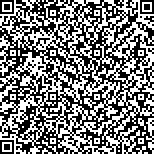柳华,韩肖华,陈红,黄晓琳.重复磁刺激对体外培养大鼠神经干细胞分化和凋亡的影响[J].中华物理医学与康复杂志,2016,38(1):13-18
扫码阅读全文

|
| 重复磁刺激对体外培养大鼠神经干细胞分化和凋亡的影响 |
|
| |
| DOI: |
| 中文关键词: 重复磁刺激 神经干细胞 凋亡 分化 |
| 英文关键词: Repetitive magnetic stimulation Neural stem cells Apoptosis Differentiation |
| 基金项目:国家自然科学基金资助项目(81071601,81171858);湖北省教育厅青年科研项目(Q20144104) |
|
| 摘要点击次数: 4660 |
| 全文下载次数: 6270 |
| 中文摘要: |
| 目的探讨重复磁刺激(rMS)对体外培养大鼠神经干细胞(NSCs)分化和凋亡作用的影响。 方法选取新生3d内的SD大鼠乳鼠双侧海马组织悬浮培养NSCs。在分化培养基下,将NSCs单细胞悬液进行贴壁诱导分化后,分为空白对照组和rMS组。空白对照组为自然分化无特殊处理,rMS组刺激参数为频率10Hz、50%最大输出强度、每日1000个脉冲、共刺激7d。rMS组最后1次干预后1h内收集2组细胞进行免疫荧光染色分析分化神经元的比例,采用免疫印迹法(Western blotting)检测胶质纤维酸性蛋白(GFAP)、β-微管蛋白3(β-Ⅲtubulin)以及脑源性神经营养因子(BDNF)的表达量。再将分化7d、无rMS干预的NSCs诱导凋亡,分为诱导凋亡组和诱导凋亡rMS组。诱导凋亡rMS组在诱导凋亡1h后进行rMS干预,刺激参数同上,诱导4h后收集细胞,通过流式细胞仪检测早期和晚期凋亡率,采用Western blotting检测凋亡相关蛋白(Caspase-3,Bcl-2,Bax)的表达量。 结果rMS干预7d后NSCs分化为神经元的比例无显著性变化(P>0.05),β-Ⅲtubulin、GFAP、BDNF相对表达量无显著性变化(P>0.05)。诱导凋亡rMS组的细胞凋亡率(9.14±4.72)%与诱导凋亡组的细胞凋亡率(15.38±4.55)%比较,差异有统计学意义(P<0.05)。诱导凋亡rMS组的Caspase-3、Bcl-2、Bax相对蛋白表达量与诱导凋亡组比较,差异均有统计学意义(P<0.05)。 结论频率10Hz、干预7d的rMS对体外培养大鼠NSCs的分化无显著影响,但能减少诱导凋亡剂下神经细胞的凋亡,对神经细胞具有保护作用。 |
| 英文摘要: |
| Objective To study any effect of repetitive magnetic stimulation (rMS) on the differentiation and apoptosis of rat neural stem cells in vitro. MethodsThe bilateral hippocampus of a 3-day old Sprague-Dawley rat was used to culture neural stem cells (NSCs) in vitro. P2 NSCs were differentiated to neurons or astrocytes in differentiation medium and then divided into a control group in which the NSCs differentiated naturally, and an rMS group in which 1000 impulses/day of rMS were applied at 10 Hz once a day for 7 days at 50% of maximum output. One hour after the last stimulation, immunofluorescence was used to analyze the ratio of neurons and astrocytes, and Western blotting was employed to evaluate the expression of glial fibrillary acidic protein (GFAP), β-Ⅲ tubulin and brain-derived neurotrophic factor (BDNF). NSCs which had differentiated for 7 days without stimulation were then selected and divided into an apoptosis group and an apoptosis+rMS group. The same rMS protocol was applied to the latter group 1h after the apoptosis, and 4h later flow cytometry (anexin V-FITC) was employed to evaluate the apoptosis ratio. Bcl-2, Bax and caspase-3 protein expression were analyzed using Western blotting. ResultsThere were no significant differences between the control and rMS groups in the proportion of NSCs differentiating to neurons or in β-Ⅲ tubulin, GFAP or BDNF protein expression. The cell apoptosis rate of the apoptosis+rMS group was significant lower than in the apoptosis group. Caspase-3, Bcl-2 and Bax protein expression were also significantly different between the two groups. ConclusionrMS at 10Hz for 7 days has no effect on the differentiation of NSCs, but it has a protective effect on neural cells and decreases the apoptosis rate. |
|
查看全文
查看/发表评论 下载PDF阅读器 |
| 关闭 |
|
|
|